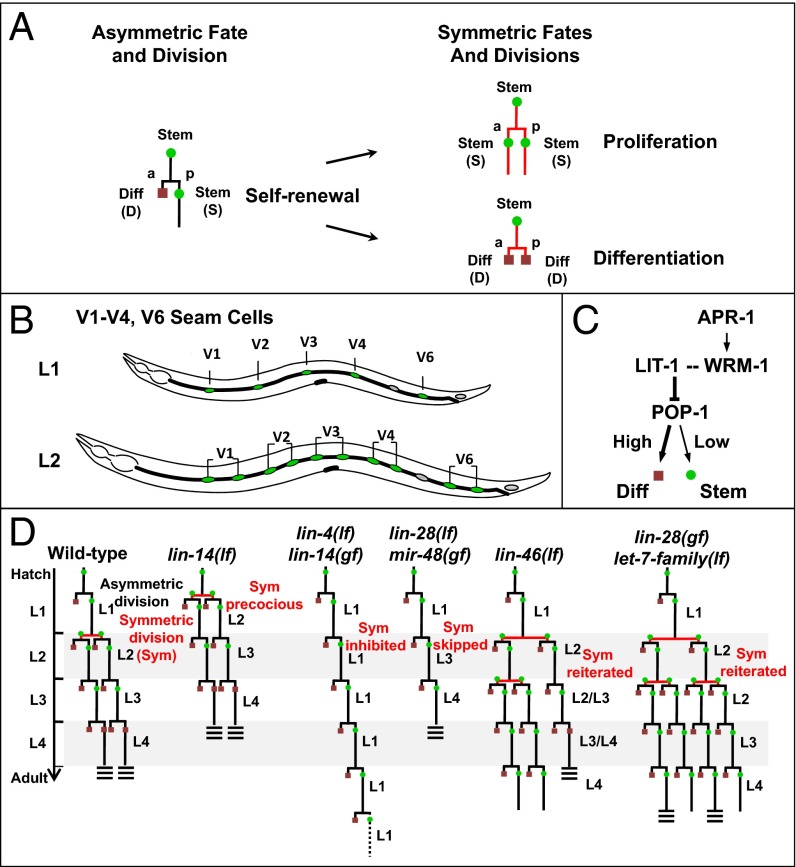Fig. 1.
Stage-specific asymmetric and symmetric divisions in postembryonic seam cell divisions in the heterochronic mutants. (A) Asymmetric cell division yields one anterior (a) differentiated cell (D, red square) and one posterior (p) stem (seam) cell (S, green circle); the asymmetric division can transit to symmetric division generating either two stem cells or two differentiating cells. (B) Arrangement of lateral hypodermal seam stem cells along one side of an L1 and L2 larva in C. elegans. (C) Genetic relationship of lit-1, wrm-1, and apr-1 on the pop-1 regulation and cell fate of seam cells in C. elegans. (D) Normal stage-specific division pattern of V1–V4/V6 cell lineages during postembryonic development of WT C. elegans; seam cells divide once at the beginning of each larval stage (or twice in the L2) until the final molt, when they terminally differentiate and secrete adult specific cuticular alae (triple bars). These cell lineage patterns include stage-specific asymmetric cell divisions [yielding one differentiated cell (red square) and one stem (seam) cell (green circle) and (specifically in the L2 stage) symmetric divisions (generating two stem cells)]. The normally L2-specific symmetric division occurs precociously (promoted) in L1 stage in the lin-14(lf) mutant, is prevented in the lin-14(gf) and lin-4(lf) mutants, is skipped in lin-28(lf), and is reiterated in lin-46(lf), lin-28(gf), or let-7-family(lf) larvae.

